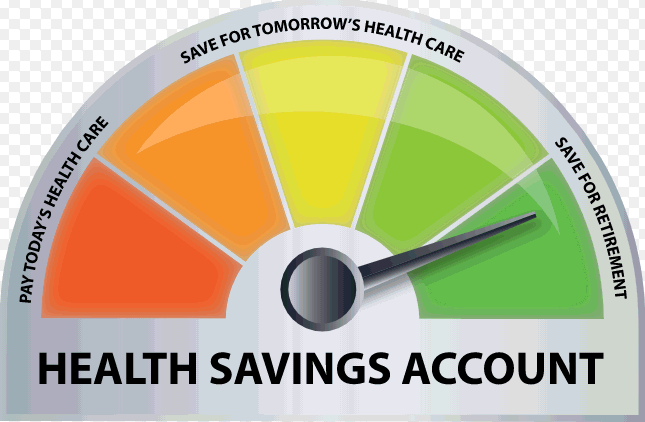What Happens to Your Health Savings Account (HSA) in Retirement?
Aug 2, 2017 • Written by Paul Staib | Certified Financial Planner (CFP®), MBA, RICP®
Blog Home » Asset Allocation » What Happens to Your Health Savings Account (HSA) in Retirement?

Health savings accounts get plenty of attention in the financial media and in Washington. Given all the publicity, it may come as a surprise that assets in HSAs aren’t all that impressive: Just $37 billion was stashed in the accounts at the end of 2016, according to HSA consultancy Devenir. For a bit of perspective, Americans held $7.9 trillion in individual retirement accounts (IRAs) at year-end 2016, with Roth IRAs accounting for $660 billion of that total, according to the Investment Company Institute. Those of you who may want a refresher on HSAs can find one here – Health Savings Accounts (HSAs):An Overview.
Yet there’s no denying the growth of this account type, which has mirrored the uptake of high-deductible healthcare plans in the marketplace and on employer-provided healthcare menus. More than 30% of employees are now covered by high-deductible healthcare plans and in turn are eligible to save and invest in an HSA. Assets in HSAs have risen accordingly, more than tenfold over the past decade, according to Devenir.
With that growth comes an increasing recognition that HSAs can be valuable components of individuals’ savings tool kits, especially for those who can afford to pay their actual healthcare expenses out of pocket while leaving their health savings account assets in place to grow. To date, just a fraction of the total assets in HSAs – $5.5 billion in 2016 – is stashed in long-term investment accounts; the bulk of HSA assets are parked in savings accounts presumably so investors can use the funds for out-of-pocket healthcare costs as they incur them. But because the accounts offer three tax benefits – tax-free contributions, tax-free compounding, and tax-free withdrawals for qualified healthcare expenses – they’re particularly advantageous for investors who can use their HSAs as long-term investment vehicles. If investors are able to pay out of pocket for healthcare costs and allow their HSA accounts to grow, the HSA assets can better harness the power of compounding, and the tax benefits are also more valuable when stretched over a longer period of time.
Investors need to do their due diligence before they employ an HSA as a long-term investment vehicle, though. How good is the HSA, and do high costs and poor investment options erode their appeal?
In addition to gauging HSA quality, long-term HSA investors need to consider the logistics of managing their HSAs, especially if their plan is to carry the HSA assets into retirement. How should HSA assets be allocated during retirement? Where in the retirement-funding queue do these accounts belong? And importantly, what would happen to your HSA if you were to pass away before you spent all the money? These are all valuable considerations for investors who are using HSAs as part of their long-term retirement program, not as vehicles to spend as they go.
Let It Grow
The starting point for thinking about how to invest your HSA is to consider when you would actually spend those monies. As noted above, HSAs enjoy triple tax-advantaged status, and the benefits of that tax-free compounding increase the longer the money is invested. To use a simple example, let’s say an investor contributed $6,000 to her HSA and earned a 5% annualized return over the ensuing 10 years. She’d have nearly $10,000 at the end of the 10-period, and she wouldn’t owe any taxes along the way – not on contributions, growth, or withdrawal, provided she uses the funds for qualified healthcare expenses.
Meanwhile, an investor who used after-tax dollars to contribute to a taxable brokerage account would steer $4,500 into the account (that is, the $6,000, less taxes, assuming she’s in the 25% income-tax bracket). Assuming a 5% annualized return on her money, she’d have $7,412 in the account 10 years later. She’d then take a tax haircut on the appreciation when she pulls the money out; assuming a 15% capital gains rate, her take-home return would be less than $7,000.
Asset Allocation
If an investor is earmarking HSA assets for retirement, those assets can be managed in line with other retirement assets; the longer the time horizon until spending, the more aggressively positioned those assets should be. But as retirement draws near, it makes sense to think about a liquidation strategy for the accounts, based on anticipated healthcare spending needs. To project spending, it’s helpful to review which expenses qualify for tax-free withdrawals. Importantly, premiums for a Medicare supplemental policies don’t qualify as tax-free withdrawals, though Medicare insurance premiums (for Parts B, C, and D), long-term care insurance premiums (up to the IRS limits), and out-of-pocket pharmaceutical costs, among others, would all be eligible. (IRS Publication 969 details which healthcare expenditures qualify for tax-free withdrawals.)
Armed with an estimate of annual healthcare spending needs, a retiree can then position the assets in the account. A bucket approach could fit nicely to an HSA spending plan. For example, a retiree could hold one to two years worth of health expenses in the savings-account option of the HSA, another seven or so years worth in bonds, and the remainder in stocks.
Where in the Retirement Distribution Queue?
In addition, retirees will also want to consider how their HSAs fit in with other assets in the distribution queue. Assuming a retiree has multiple accounts to choose from, the HSA should logically come after withdrawals from taxable accounts and traditional IRAs and 401(k)s. That’s because HSAs enjoy tax-free compounding and withdrawals are tax-free for qualified healthcare expenses, so it’s valuable to hang onto those benefits for as long as possible. Taxable account withdrawals, by contrast, will at a minimum be subject to capital gains taxes on appreciation; they may also incur taxes if they hold investments that kick off taxable income or capital gains during the investor’s holding period. Withdrawals from tax-deferred accounts, meanwhile, are taxed at investor’s ordinary income tax rates; these accounts are also subject to required minimum distributions, whereas HSAs are not.
But how about withdrawals from HSAs versus Roth IRAs? Withdrawals from HSAs are tax-free, just like Roth IRAS; nor do RMDs apply to either account type. But inherited HSAs don’t have the same tax benefits that Roth IRAs do. If a spouse is the beneficiary of an HSA, he or she can maintain the account as an HSA and continue to take advantage of those generous tax benefits. On the other hand, if someone other than the spouse is the beneficiary of the HSA, the HSA and its attendant tax benefits cease to exist upon the death of the original HSA owner. That means the inherited amount is fully taxable to the beneficiary. Given those drawbacks, that suggests that HSA owners with a nonspouse beneficiary (or a spouse beneficiary with a limited expected life span) prioritize HSA withdrawals well ahead of Roth IRA withdrawals.
Those rules also suggests that HSA investors give due consideration to the beneficiaries of their accounts. While naming a spouse as a beneficiary can make a lot of sense, the last surviving spouse might consider expediting expenditures from the HSA (at least to match healthcare spending) and/or naming a charity as the HSA beneficiary. In contrast to an HSA inherited by a human beneficiary who’s not a spouse, the charity wouldn’t owe taxes on the inherited amount.

Paul Staib | Certified Financial Planner (CFP®), MBA, RICP®
Paul Staib, Certified Financial Planner (CFP®), RICP®, is an independent Flat Fee-Only financial planner. Staib Financial Planning, LLC provides comprehensive financial planning, retirement planning, and investment management services to help clients in all financial situations achieve their personal financial goals. Staib Financial Planning, LLC serves clients as a fiduciary and never earns a commission of any kind. Our offices are located in the south Denver metro area, enabling us to conveniently serve clients in Highlands Ranch, Littleton, Lone Tree, Aurora, Parker, Denver Tech Center, Centennial, Castle Pines and surrounding communities. We also offer our services virtually.
Read Next
TAXATION OF RETIREMENT INCOME
• Written By Paul Staib | Certified Financial Planner (CFP®), MBA, RICP®
A Summary of How Your Retirement Income is Taxed Retirees often receive income from a variety of sources, including Social…
5 Stealth Taxes That Can Impact Your Retirement
• Written By Paul Staib | Certified Financial Planner (CFP®), MBA, RICP®
Every year, an increasing number of retirees are impacted by one or more “stealth” taxes. While certain taxes may be…
